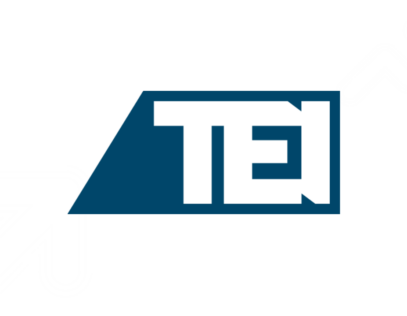How an Auditor Reviews Your Tax Provision: A Real-world Perspective
Tax provision errors under ASC 740 remain a leading cause of financial restatements: hardly a surprise when you consider how this one number—the estimated amount of income tax that a company expects to pay—directly impacts its reported earnings (and, if a public company, its EPS). That’s why the external auditor, whose role is to validate that there are no material errors or misstatements in the company’s financial statements, is such a key player.
But how do you, a smart tax executive, approach that player? As an arbiter, an adversary, or an ally?
You need to take a strategic, cooperative approach that weaves the auditor’s perspective into the fabric of your work at every stage of the process. You want to know what they are looking for, what they are looking at, and why. And you should feel free to consult your auditor for an informal opinion in advance if you’re wondering about the tax treatment of a particular item or issue. (Spoiler alert: They want that, too.)
Bottom line: To get to a clean audit, you don’t need to hand off your provision calculations on a wing and a prayer. Here, we’ll demonstrate how you can be both prepared and proactive.
Where the Rubber Meets the Road
Finalizing your tax provision under almost impossibly tight timeframes is no walk in the park. It requires oceans of data, a deep knowledge of ever-changing tax rules, technical expertise—and, crucially, plenty of judgment calls—all on an extremely compressed timeline. Your auditor’s job will be to verify that all your provision calculations are accurate, and that they are supported by every underlying statement, schedule, and document.
Four main calculations get funneled into the annual tax provision: The current provision; the deferred roll-forward; the state provision; and the rate reconciliation. While the auditor will not check each stage in real time, there are key issues in each of those calculation stages that they will scrutinize.
The provision process can’t even begin until the finance team hands over the trial balance: a final schedule of the company’s complete financial activity over the period before taxes, itemized with the elements of both the balance sheet (assets, liabilities, and shareholder equity) and income statement (revenue, expenses, gains, and losses). Supporting workpapers on areas like fixed assets, intangibles, and stock compensation, may dribble in over a few days, but the trial balance is the obligatory starting point.
The Current Provision
The current provision is an estimate of the company’s income tax liability in advance of its current-year tax return. It’s arrived at by converting the company’s net book income from the trial balance (calculated under GAAP or IFRS rules) to income tax (following ASC 740 or IAS 12 rules and all other relevant tax laws)—a process that involves adjustments to the former, plus adding net operating losses and credits to the latter. Those adjustments are either permanent (e.g., financial book items like meals or fines that will never be tax-deductible) or temporary (e.g., financial book items like depreciation or accruals that aren’t yet includable as income or deduction, but that will be at a future date). After these calculations, you apply the current statutory tax rate(s) to arrive at the current provision.
This calculation would apply on both the domestic and foreign level, and compute the estimated current-year tax liability on an entity-by-entity, country-by-country basis.
The auditor will tie your current provision back to the rest of your pre-tax accounting financial statements, before looking at your adjustments—temporary and permanent—and checking that they all line up with your trial balance and supporting work papers. In this process, they’ll not only check the accuracy of your current-year calculations, they’ll also verify the applicable return-to-provision calculations that flow into your current provision, evaluating the differences between the prior-year’s provision and last year’s tax return (the so-called “true-up”). Here, the auditor will home in on what these differences stem from—a “change in estimate” (acceptable) or a “correction of an error” (not as acceptable). If the auditor finds material correction of errors in the return-to-provision, this could lead to significant issues: it could indicate that the prior-year financial statements may have been incorrectly stated.
For this reason, it’s key to get ahead of this return-to-provision calculation as soon as possible—hopefully, long before year-end: you’ll want to be triple-sure that your true-up calculations, typically a manual process, are waterproof. The best tax departments ensure this process is completed, and even audited, before year-end. Considering this is something that can be completed and reviewed well in advance, why wait and cause additional stress during the year-end crunch? You don’t ever want to start a marathon with one shoe untied.
“If an auditor finds material correction of errors in the return-to-provision, this could lead to significant issues: it could indicate that the prior-year financial statements may have been incorrectly stated.”
The Takeaway
In the current provision, an auditor will …
- Tie your current provision back to the rest of your pre-tax accounting financial statements
- Check that adjustments line up with trial balance and work papers
- Verify the applicable return-to-provision calculations that flow into your current provision
- Check the accuracy of your current-year calculations
The Deferred Roll-forward
The deferred roll-forward is a balance-sheet concept whose purpose is to quantify future tax assets and liabilities. You’ll want to take extra care in navigating this neighborhood, because when companies get tripped up by an audit, it usually happens here. (One reason is that auditors are generally far more lasered in on these issues than tax executives, who are laboring under the press of a crushing workload on a tight deadline.)
Deferreds—be they deferred tax assets or liabilities—are the product of temporary differences between tax and accounting, and also include tax attributes like net operating losses and tax credits which accumulate and are rolled forward. What all these items have in common is that they’ll be realized or reversed at some point in the future. Timing differences can easily throw a wrench in this calculation: it’s far too easy to exclude or misstate a temporary difference that arose during the year.
“Also, remember that these calculations rest on a continuum of other calculations—so if what you’ve been rolling forward from past years contains an error, that could bubble up this year, causing a string of headaches.”
The auditor will prove out your ending balances—comparing net tax value per supporting workpapers to net book value per the trial balance—and ensure this delta equates to the balance in your gross (non-tax-effected) deferred tax assets and liabilities. One issue in particular that auditors are keen to dive into is valuation allowances, a company’s determination (under U.S. GAAP and similarly, though not exactly, under IFRS), that there is a greater than 50-50 chance that some or all of that deferred tax asset will not be realized due to insufficient future taxable income. Given that auditors know that companies have a natural incentive to push up earnings and overstate assets, you can expect supporting evidence to be scrutinized. (In fact, it’s not a bad idea to ask for an opinion in advance.)
The Takeaway
- Deferreds are where companies get tripped up by an audit
- These calculations rest on a continuum of other calculations—so if there’s a mistake one year, that carries forward
- The auditor will prove out your ending balances and will want to review valuation allowances
“You’ll want to take extra care in navigating deferreds, because when companies get tripped up by an audit, it usually happens here.”
The State Provision
Once the federal provision has been figured out, it’s time to calculate the state provision—a calculation beginning at federal taxable income before the state tax deduction, and then applying a series of adjustments based on each individual state’s rules and rates. This requires figuring an apportionment factor in order to divvy up the income among those states, before applying each state’s income tax rate. As with deferreds, the more moving parts, the more manual entry—and the more potential for error—so you’ll want to be careful here. The auditor will verify all of the components of your apportionment and make sure you’ve chopped up the income correctly and tied out the tax rates accurately to published guidance.
Then they’ll take another look through that entire calculation for material issues.
Unfortunately, some companies relegate the state provision to second-tier status and take shortcuts, like using an overall blended rate for the current and deferred state provision—not breaking out state tax attributes—then simply using the
prior-year apportionment percentages based on the prior-year tax return. Each of these shortcuts may very well be fine, but the key is being able to prove that your approach is not materially different than what the result would have been if you had done everything by the book. Failing to perform that gap analysis exercise can lead to red flags, given that auditors recommend that the state provision be updated every year. At the very least, perform that sensitivity analysis—even if high-level—and communicate your approach to your auditor well in advance to gain their approval on your approach.
The Takeaway: State Provision
- The state provision has lots of moving parts, making it prone to error
- The auditor will verify the components of your apportionment, income, and tax rates
- Auditors recommend that it be updated every year
Rate Reconciliation
Look at this stage as putting a ribbon on all your work. You add up your current and deferred provisions to get your total provision. From there, you will calculate your effective tax rate (ETR): the total provision, divided by the company’s pre-tax book income, or trial balance. And then you declare it to the world in your footnote disclosures.
First, however, you’ll need to perform every tax professional’s favorite reconciliation, or check, exercise: the rate reconciliation. To reconcile your ETR with the relevant statutory rate(s) on the books, you have to detail all the factors (or “rate drivers”) that account for the difference. These include not only the permanent adjustments discussed above, but also items like the state tax expense, tax credits, change in valuation allowance, and “foreign rate differential” (overseas tax rates which vary from the U.S. statutory federal rate of 21%).
For the auditor, the rate reconciliation serves as a checkpoint to ensure your provision calculation is correct—that your total tax expense per the rate reconciliation equals your total tax expense per the provision calculation (current + deferred)—and that every component of that provision has been accurately tied to every other. Expect them to verify every detail of your journey from statutory to effective tax rate.
The Takeaway: Rate Reconciliation
- Auditors see this as a checkpoint that your provision calculation is correct, verifying that the journey from statutory to effective tax rate is correct
Your ETR: The tax department report card
Now that you know what a valuation allowance is and how and why it’s used, the question becomes: How does it affect a company’s income tax provision? The short answer is when you reduce the value of a deferred tax asset, it has a direct effect on your income tax expense and therefore your effective tax rate, which is what the income tax provision is all about.
Think of a journal entry for a deferred tax asset. The deferred tax benefit and the current tax expense are recorded for the same exact amount (along with an income tax payable and deferred tax asset), but one’s a credit and one is a debit.
While it doesn’t show up on the face of your financial statements, the effective tax rate is obviously considered the focal point of the whole provision process—the most scrutinized number you will publish. That’s because it tells the story of your entire tax operation and, by extension, of the company itself. It reveals how tax-efficient you are, compared not only to your peers—companies in your sector and/or of your size—but also with your own performance in quarters and years past. Companies typically engage in continuous tax planning to bring their ETR down.
Know Before You Plug
Because of all the moving pieces that go into the provision process, companies will sometimes need to “plug” (artificially adjust) their rate reconciliation in case of a seemingly minor discrepancy. In other words, they’ll fill in what looks like a small gap to make the numbers balance.
Fair enough. But what exactly caused that discrepancy? Something, somewhere, is off. Let’s say it’s $100, and you simply plug that amount. In actuality, you could be off by $1 million one way and $999,900 the other way. Auditors know there could be multiple issues contributing to any gap and may well ask to dig deeper. Best to know what’s really going on—and be prepared with an answer.
Auditors, too, will take a keen interest in this figure, running analytics to examine the company’s ETR over time, and seeking to understand the change in your underlying financials. If the story your ETR tells seems to stand out (for better or for worse), you may be asked to tell the back story.
“There’s nothing intrinsically wrong if, for example, your effective tax rate has changed relative to the previous quarter, or if it is significantly higher or lower than your competitors’. You just need to be able to explain why.”
The ETR is a sensitive metric, and an especially useful yardstick for the company when it comes to tweaking operations or planning future strategies. A truly strategic tax department will keep an ear to the ground for legislative changes around the world that could impact not only reporting requirements but the company’s ETR.
And if a new tax rate or law (federal or state) is in the offing, that may throw a new light on how you might value (or revalue) your deferreds—and your ending assets and liabilities. Tax needs to be ready to jump in the fray and offer its expert input at any time. Having that 30,000-foot perspective will also give you a leg up at the next audit.
Get It Right From The Start
The tax provision is likely the most scrutinized process the tax department will undertake. It’s obviously much easier to get it right from the beginning than it is to have to backtrack under unwelcome scrutiny.
The benefits of being prepared and proactive for the audit go well beyond not getting flagged on a material issue. There’s no reason why, in the midst of calculating your provision, you can’t seek an advance opinion or even a sign-off on a potentially thorny technical tax question. If you update your provision model quarterly (an excellent practice, even if not required), you could ask for a professional opinion on its suitability well before year-end. If your company is contemplating a transaction, you could run scenarios and tax treatments by your auditor in advance to see if they would pass muster. Such discussions could even lead to ideas on how to structure transactions for optimal advantage.
Technology, too, can help avoid manual errors, which are sure to catch the eye of auditors. In every audit, the auditors focus not only on technical tax accuracy, but also on simple math and formula errors (which, in an Excel world, are unfortunately all too common). Technology can help you put that latter element to bed, and relieve you of the worry about every single formula in thousands of cells in a spreadsheet. Technology can also trace issues back to their source and correct them fast—minimizing the possibility of financial misstatements. Software can even help you optimize ETR against what-if scenarios like new business transactions. If there’s one takeaway here, it’s that it’s essential to keep the perspective of the auditor top-of-mind as you do your work.
See that person as an ally with the same goal as you: ensuring the accuracy and transparency of your company’s financial statements. Following these practices can mean the difference between celebrating a clean audit… and scrambling to explain what went wrong.
Turn Tax Data Into Business Intelligence
At Exactera, we believe that tax compliance is more than just obligatory documentation. Approached strategically, compliance can be an ongoing tool that reveals valuable insights about a business’ performance. Our AI-driven transfer pricing software, revolutionary income tax provision solution, and R&D tax credit services empower tax professionals to go beyond mere data gathering and number crunching. Our analytics home in on how a company’s tax position impacts the bottom line. Tax departments that embrace our technology become a value-add part of the business. At Exactera, we turn tax data into business intelligence. Unleash the power of compliance. See how at exactera.com.









